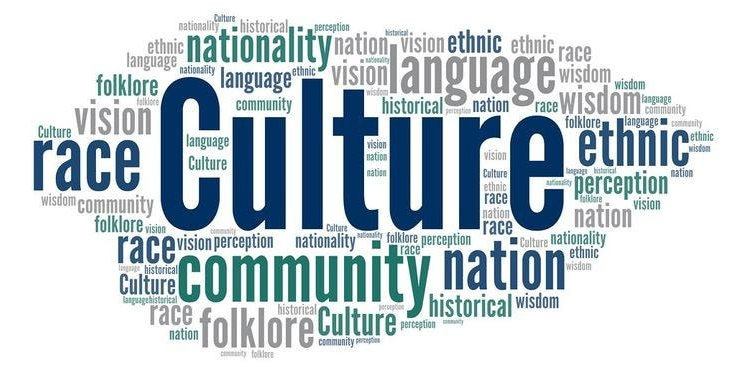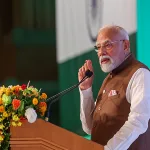‘Western cultural hegemony’ has long been debated among political scientists and scholars which paved its way to reach the public. Many of you might have read or heard about the famous essays written by Antonio Gramsci ‘Prison Notebooks’. He wrote these essays when the fascist French regime put him behind bars between 1929 and 1935. He was the stalwart behind introducing the concept of cultural hegemony. He was of the view that the ruling class maintains its power by manipulating cultural norms and values not only through power but also through economic changes. Consequently, it shapes global discourse, values, and standards that frequently sideline non-Western cultures. The ‘Straw Man distortions/ fallacy’ is a pervasive tool in this hegemonic arsenal. This tool misrepresents the arguments of opponents to distort their facts and narratives exaggeratedly. How does this distortion or fallacy operate within the context of Western cultural dominance?
In the arena of Western cultural hegemony, the straw man fallacy/ distortion portrays distorted images of non-Western cultures, values, and practices. According to ‘Logic and Contemporary Rhetoric’ by Howard Kahane, a complex argument is oversimplified to undermine serious, logical, and diplomatic discussion. The real issues get sidestepped by creating a “straw man” version of the argument. How many of you know the Britton Woods Commission? The commission related to the monetary system aimed at stabilizing the world economy in the late 20th century. The Britton Woods Commission failed after non-western countries protested it in the early 1970s because of US Dollar Overvaluation.
The US Dollar was the cornerstone of the system, and its value was pegged to gold. Over time, the value of the Dollar became overvalued, and the currency of other countries, especially third-world countries was undervalued. The discussions about the false outcomes were ‘Straw Man distortions.’ The West then tried to convince other countries, especially the Third World, that the commission would create perfect economic stability. However, it benefitted the West, and the developing countries were not able to avoid the multifaceted nature of the commission. The West mislead the non-Western nations by distorting the facts.
According to Orientalism, written by a Palestinian-American philosopher, author, and political activist, Edward said, that history has shown and repeated multiple times that West has depicted Eastern societies as Irrational, backward, and exotic; to reinforce its image as rational, progressive, and civilized. Consequently, non-Western cultures are reduced to a set of simplistic stereotypes making it easier to criticize and control them. This is the perfect and classical illustration of the Straw man fallacy.
Jack George Shaheen was an American writer and lecturer, who often used to write and lecture on racial & ethnic stereotypes, wrote a book namely ‘Reel Bad Arabs’, and highlighted how Hollywood cinema has perpetuated negative stereotypes of one particular ethnic and religious community. He analyzed over 1000 films and found that the vast majority portrayed Arabs as buffoons & Villains. Hollywood has released more than a dozen movies against the Hindu religion. In 1984, Indiana Jones and the Temple of Doom faced backlash because of their negative projection of Hindu religion and Indian culture. The Love Guru in 2008 perpetuated stereotypes and showed Hindu Gurus in a negative light. There are a lot of examples that have explicitly revolved around negative stereotypes, lack of cultural sensitivity, and misrepresentation of some religious practices.
According to John Dewey, “Education is not preparation for life; education is life itself.” Ralph Waldo Emerson reiterated, “The secret of education lies in respecting the pupil.” Mortimer J. Adler has remarked, “The purpose of learning is growth, and our minds, unlike our bodies, can continue growing as we continue to live.” These Western philosophers reflect deep consideration of the purpose of education in human life and society. However, the Western education system perpetuates cultural hegemony by presenting a Eurocentric view of history.
Non-western civilizations are either ignored or presented in a way that supports Western superiority. This approach is a Straw man version of history, where the achievements of non-western countries are undervalued or misrepresented to hide the truth regarding colonialism and subjugation. The study ‘Edward Said’s Orientalism and the Representation of the East in Gardens of Water by Alan Drew’, published in Sage Journal by Yana Maliyana in 2013, proved that the West uses typical stereotyping and represents the East as superior to the West. This Straw Man distortion leads to the justification of the West imperialism towards the East.
The Straw Man distortions have significant real-world implications. The instability and anxiety in the East and Middle East in the present decade are due to the media distorting facts. According to Neo-Marxism, Media was a superstructure but now it is controlled by a few individuals which has resulted in misrepresentation of facts and figures. Western narratives justify policies and practices that perpetuate inequality and dominance using the SDGs of the UN as their protective shield. Additionally, the Straw Man fallacy in cultural representation highlights prejudice and discrimination within Western societies. The xenophobic attitudes and policies are reinforced when non-western countries are consistently portrayed negatively, contributing to a climate of intolerance and division.
Our country has successfully addressed and challenged the Straw Man distortions from time to time. The current robust foreign policy of our nation is a concerted effort to promote cultural pluralism and genuine understanding. Our country has become one of the fastest-growing major economies. The Information Technology and Business Process Outsourcing sectors have seen exponential growth. India has become one of the largest start-up ecosystems in the world. The Indian Space Research Organization (ISRO) has achieved several milestones, including the recent successful Chandrayaan-3 mission. The Digital India initiative has aimed to improve online infrastructure. India has strengthened its strategic partnerships with major global powers of the West.
Moreover, the successive governments of India from time to time have taken a leading role in addressing global issues like Climate change, terrorism, and sustainable development. India has remained a dominant force in Cricket and other Sports. Indian athletes have excelled in various Sports in the Olympics. Bollywood has gained international acclaim. India has promoted Yoga and spirituality leading to the establishment of International Yoga Day by the United Nations in 2015. Some educated people have used the YouTube platform to educate people regarding international relations, Journalism, education, society, etc. Hence, our country has not only challenged the Straw Man fallacy but has proved itself as a country that promotes mutual understanding, cultural pluralism, and genuine understanding.
Addressing the Straw Man distortions requires momentum and consistency to promote cultural pluralism. This involves critically examining media representations, educational curricula, and policies to ensure they reflect the complexity and diversity of global cultures. According to ‘The West and the Rest: Discourse and Power,’ by Stuart Hall, “the interconnections and mutual influences between different cultures is of utmost importance.” Moreover, he emphasized the importance of valuing cultural differences without reducing them to simplistic binaries. We are not against the West, but we are responsible citizens of the great soil of India which has taught us tolerance, communal harmony, mutual understanding, and respecting others irrespective of caste, creed, race, color, and religion; but it has also taught us to critically analyze the philosophical approaches to be aware of the contemporary world.
Media literacy can help counteract Straw Man distortions. I know one of the researchers in India namely Ms. Bhavna Pathak who has successfully started an important initiative to make people Media literate. She has opened a Channel on YouTube namely Media Dictionary where experts from various departments define media terminologies, news, and views to make fellow citizens media literate. This is a perfect example of how we Indians follow the principle of Fraternity and try to communicate with people using Digital platforms. These initiatives at individual, community, and social levels can help in counteracting Straw Man distortions.
By recognizing and challenging these distortions, we can work towards a more equitable and inclusive global society. It is essential to move beyond superficial representations and engage with the true complexity and richness of all cultures, developing a world where diversity is celebrated rather than marginalized. This shift requires a commitment to cultural pluralism and a willingness to confront the biases that underpin our perceptions and policies.
(The author is RK columnist. He is studying Doctor of Philosophy in Journalism and Mass Communication from IUST, Awantipora. He can be reached at: [email protected])








